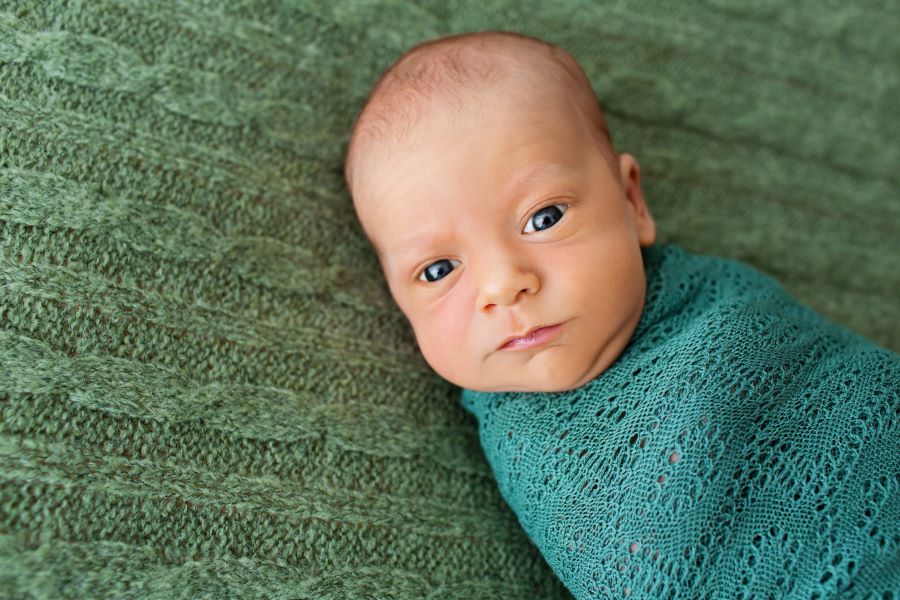How Well can my Baby See?

Babies don’t arrive in the world fully developed. In reality, they continue to develop even basic characteristics long after birth, including the important sense of sight. Baby’s vision also goes through developmental stages, changing over time as the baby grows.
In the first couple of months of life, your baby is adjusting to the wonder of the world. At this early stage, your baby’s eyes are just starting to learn to work together to visually process what is seen. As a result, eyes may cross or may not track movement together. This is normal. However, if your baby is not able to track at two months old or the eye-crossing persists past three months of age, you should take your child to your pediatrician for a visual assessment.
Until about three months, your baby can’t see clearly beyond about 8-10 inches from their face—the perfect distance to see Mom’s face during breastfeeding or Dad’s face while cuddling. At this age, human faces are the stimulus your baby likes most. After three months, eye coordination improves. About the time your baby starts to see past 8-10 inches, your baby will also be able to track a toy as you move it from left to right or up and down in front of their face. By the age of 3-4 months, your baby may begin developing the hand-eye coordination to begin to reach for and bat at objects in from of them.
While babies can see the contrast in color, such as bold stripes or patterns, they won’t be able—yet—to really distinguish the bright colors in their nursery. However, at about 4-5 months, your baby will be able to distinguish colors and many shades.
By about the age of four months, your baby’s distance vision begins to develop and you may notice your baby smiling at you from across the room or becomes fixated on a picture hanging on the wall. Babies begin to gain depth perception and start to see the world in three dimensions by age 6-8 months.
By about a year old, eyesight is more fully developed and your baby continues to master eye-hand coordination. By now, your baby can grasp objects between the thumb and forefinger in a pincer grasp and can judge distance as when reaching for something.
Although the development of healthy eyesight is natural, you can help your baby by providing lots of visual stimulation—including bright, contrasting colors and mobility—but by far the most important visual stimulation is the sight of your face.
Sources:
- American Optometric Association
- Infant Vision: Birth to 24 Months of Age.
American Academy of Pediatrics - Your baby’s vision: 1 month.
Powered by Bundoo®










